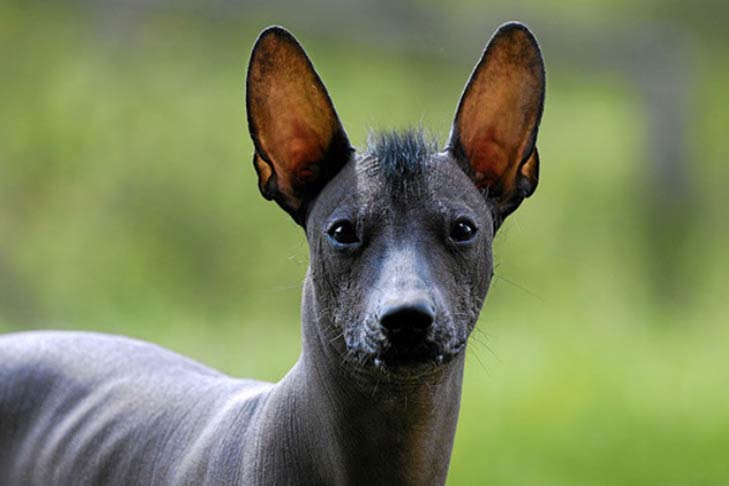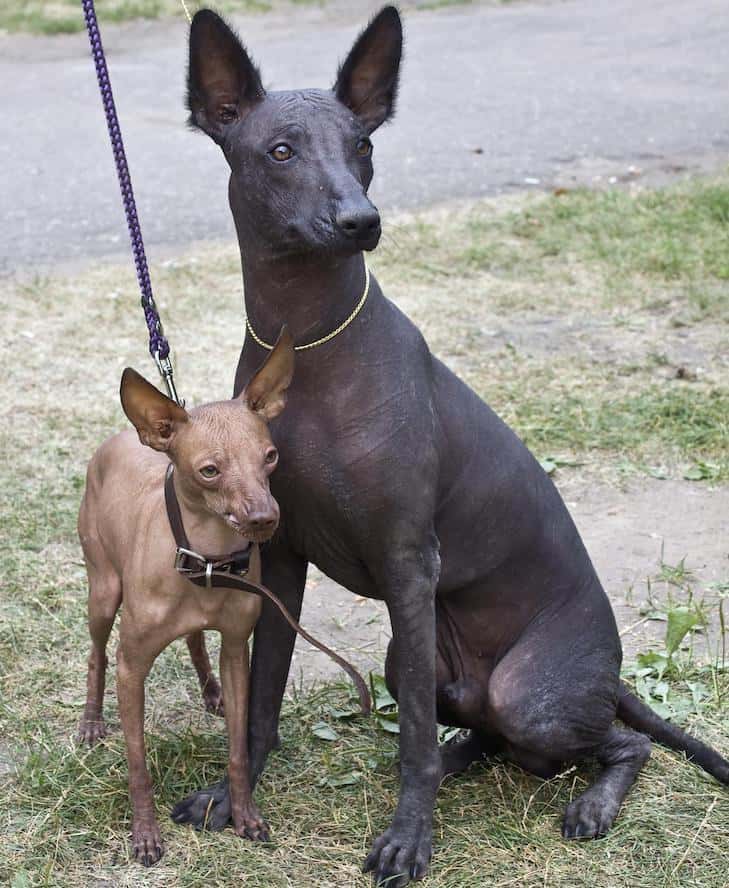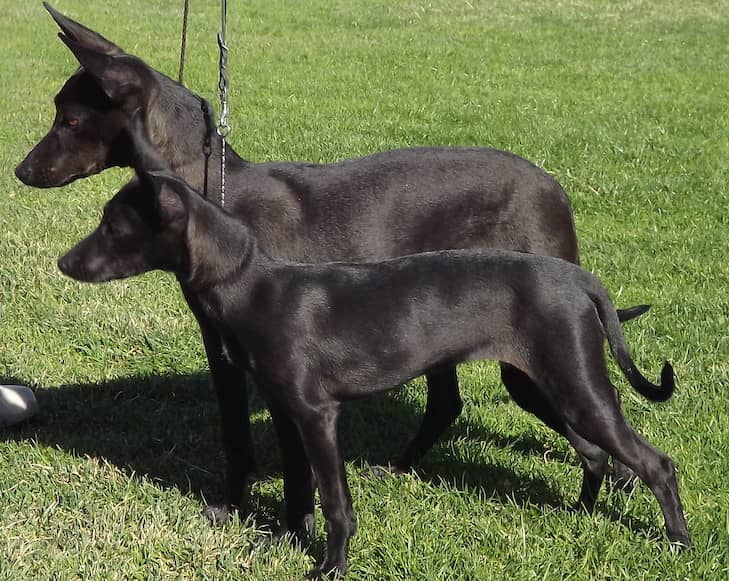
|
Though they descend from regal dogs dating back over 3,500 years, the Xoloitzcuintli (pronounced “show-low-eats-QUEENT-lee”) breed is still relatively unknown among many dog lovers. But, it’s worth taking note of these unique-looking canines, commonly called Xolos, or Mexican hairless dogs.
Ancient Aztecs worshiped the breed for the dogs’ statuesque look and fierce loyalty. Their name derives from the Aztec god of fire and lightning, Xolotl. More recently, artists like Frida Kahlo and Diego Rivera adored these dogs and frequently featured them in their paintings. You may have even spotted Dante the heroic Xolo in the Disney Pixar movie Coco. There are several different varieties of Xolos, which makes it quite easy to find the perfect pup to suit your family’s needs.
Xolos Come in Three Sizes
Like many breeds, Xolos come in more than one size.
- Toy, with a height between 10 and 14 inches tall.
- Miniature, with a height between 14 and 18 inches tall.
- Standard, with a height between 18 and 23 inches tall.
Unlike other breeds, however, all three sizes of this breed compete together in AKC conformation. That’s because the AKC accepted this rare breed as a whole, with all three sizes included as one entity, according to Penny Inan, Xolo breeder and member of the judges’ education committee of the Xoloitzcuintli Club of America.

In 2011, when the Xoloitzcuintli was accepted into the Non-Sporting Group as the AKC’s 170th recognized breed, the Xolo parent club decided not to separate the varieties into distinct breeds.
“The acting board of the parent club decided that, after working to get this breed recognized for so long, we would just go in ‘all together’ and accept the terms set forth by AKC,” says Kay Lawson, AKC judge, Xolo breeder, and current treasurer of the Xoloitzcuintli Club of America.
Responsible breeders encourage mating Xolos of the same size, which will usually produce similar-sized offspring, but there are exceptions.
“It depends on the breeding,” says Inan. “A large Miniature may ‘go over’ the size limits and be a small Standard, or vice versa.”
Xolos Come in Many Colors
The AKC breed standard for the Xolo calls for a dark, uniform coat. While a solid dark coat is preferable, white markings aren’t considered a fault in the ring.
“We see them in every color,” says Lawson. “From a variety of black, seal, charcoal, brown, pariah, black and tan, tri-color, and liver, either solid or with varying amounts of white or mixture of colors,” says Lawson.
“Over the very long history of the breed, they were exposed to many breeds of dogs that could have and most likely bred into all of the modern-day lines,” affirms Lawson. “That’s why, today, we see such a variety of colors in the coats of this breed.”
Although you may notice their coat or lack of one first, many Xolos tend to have unique eye colors. The color of the eyes varies. A dark eye is preferred, but the hues can range anywhere from dark brown to a caramel color.
Xolos Come in Hairless and Coated Varieties
The two varieties of Xolos are those with no hair and those with a short coat. According to the breed standard, hairless varieties can have some hair on their head, feet, and tail.
Coated Xolos have a thin coat of fur all over their bodies.
“The tail should only have the correct coat — that is short and tight to the body — on the lower third and the feet should only have coat on the feet to the wrist and not higher than the pastern,” says Lawson.
“These dogs are completely covered in, ideally, a short, smooth, close-fitting coat of hair,” says Inan. “It should be a solid dark color, although there are variations and no disqualifications.”
“The coat should never be plush, wavy, curly, or uneven,” adds Lawson. “We also see incorrect coats that are longer, too thick, and those that resemble other breeds — this is considered a fault when evaluating a puppy.”

Xolos Have Both Erect Ears and Floppy Ears
Like other primitive breeds, most Xolos have erect ears that stand at attention and are quite mobile.
“Their ears can function independently of each other and their function is quite radar-like,” says Inan. “This gives them a distinctive and regal look.”
“Breeders will encourage softer ears to stand by supporting the ear while the cartilage hardens,” adds Lawson. “This can be more difficult in coated varieties because the weight of the hair tends to pull them down.”
Some Xolos, especially coated ones, may develop more floppy ears that don’t stand erect, but this is considered a fault. One feature that does result in disqualification for dogs who compete is cropped ears.
Xolos Have Different Types of Skin
Unlike most other breeds, hairless Xolos have tough, hide-like skin that can vary in thickness.
“You tend to see that thinner skin in the smaller sizes,” says Lawson. “However, all three can have differences in the thickness.”
Hairless Xolos may need a bit of sunscreen if they are lighter in color and you might even notice a bit of acne in young pups.
“In adolescence, they may experience acne. But correct cleaning and a mild astringent encourages healing until they outgrow that period,” says Inan.
You can also clothe your Xolo to protect their skin from the sun and elements. However, that’s often done more out of owner enjoyment than the protection of these generally tough-skinned pups.
Think a Xolo is the breed for you? Find Xolo puppies to share your life with on the AKC Marketplace. Or, show off your love for the rare and majestic Xoloitzcuintli with AKC Xolo merchandise that celebrates this ancient breed.

